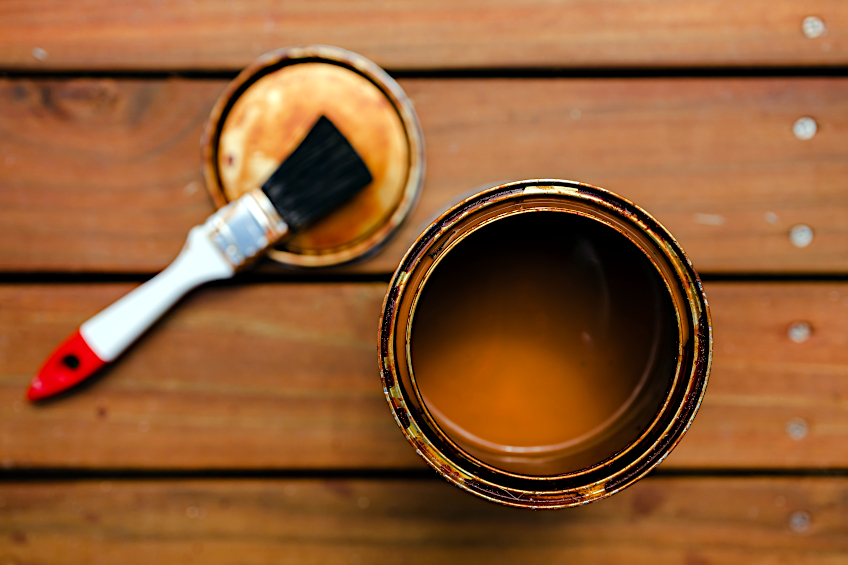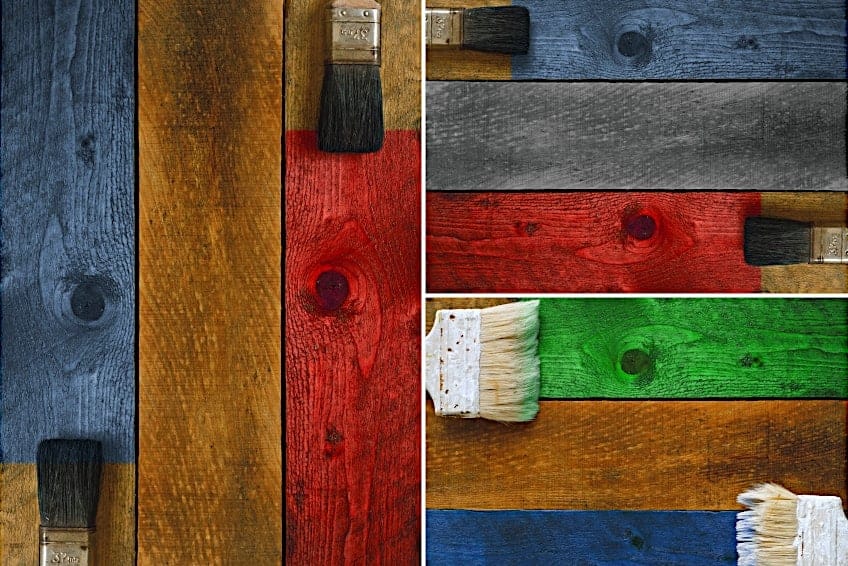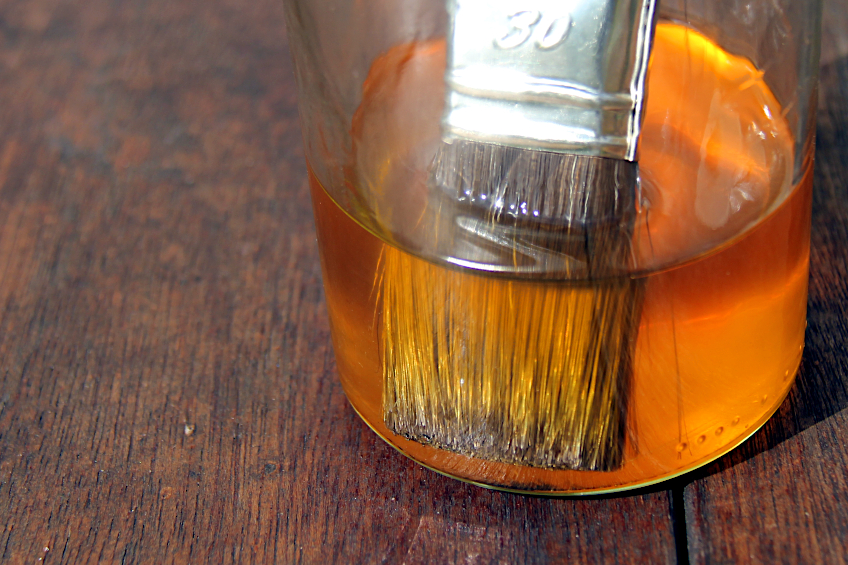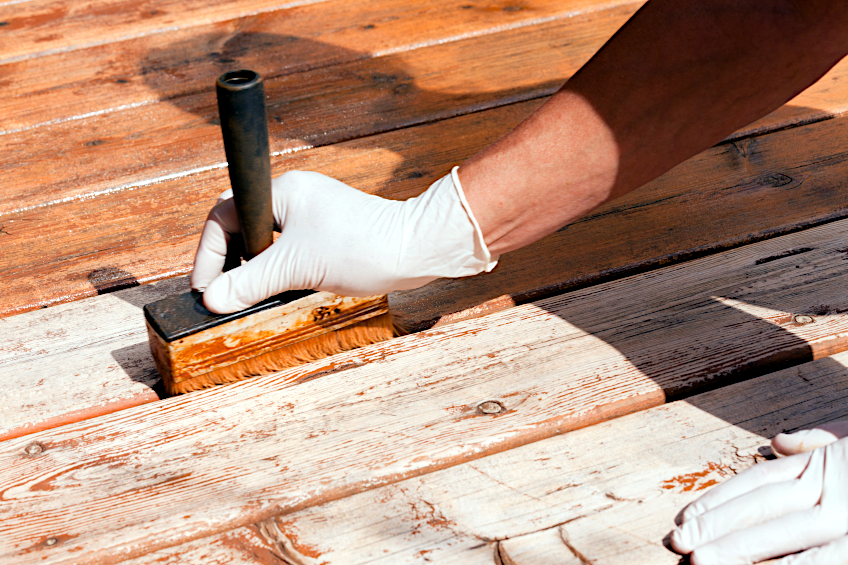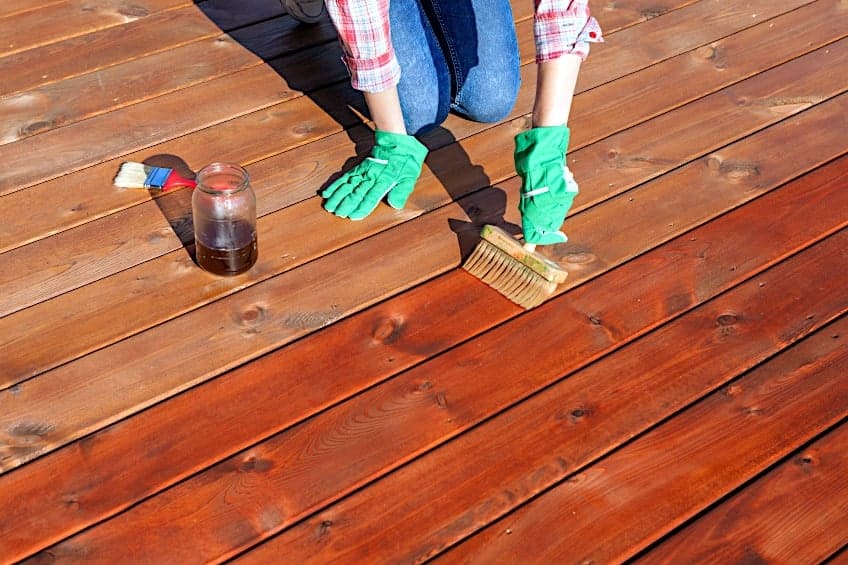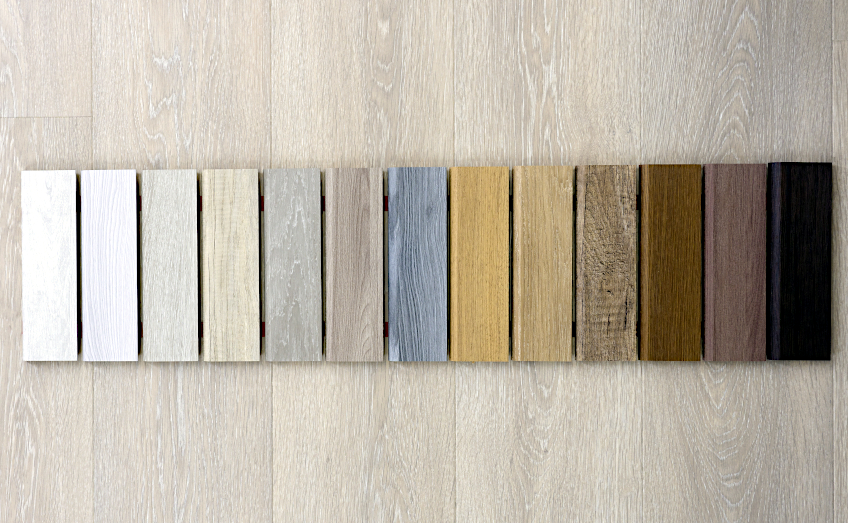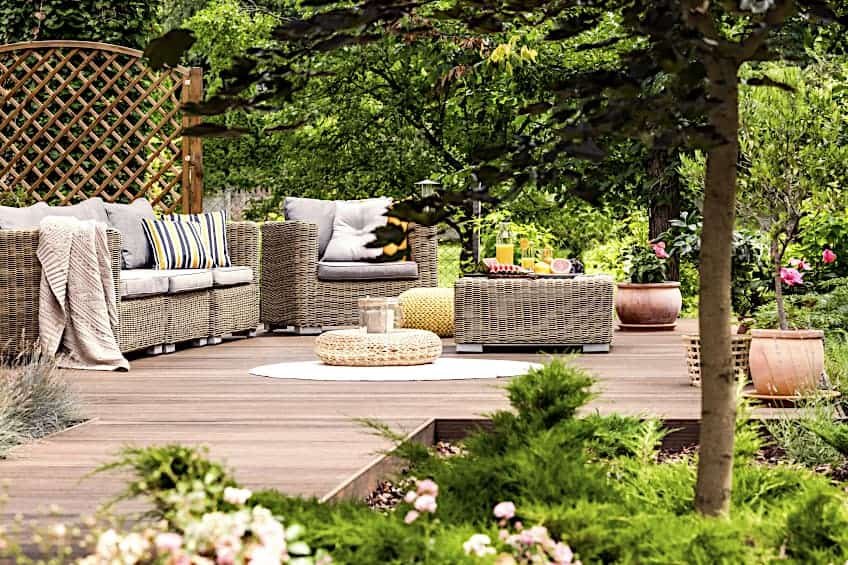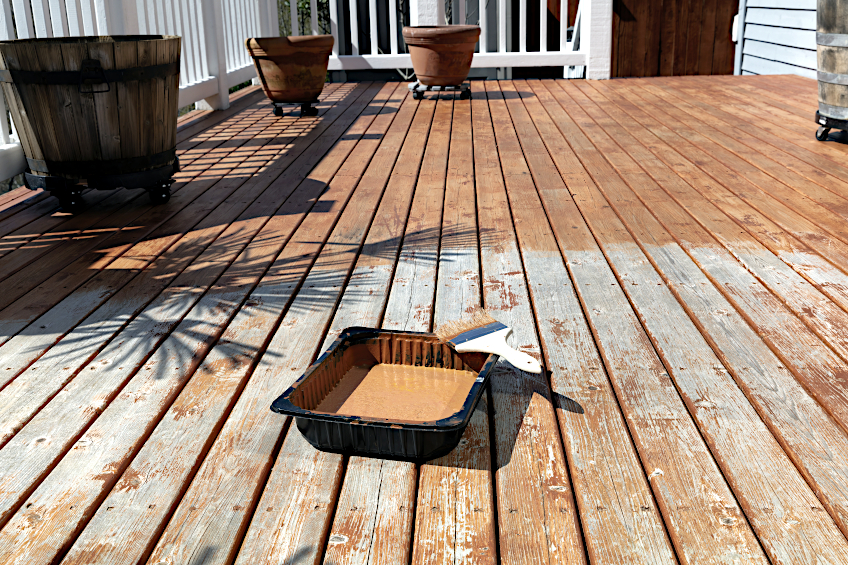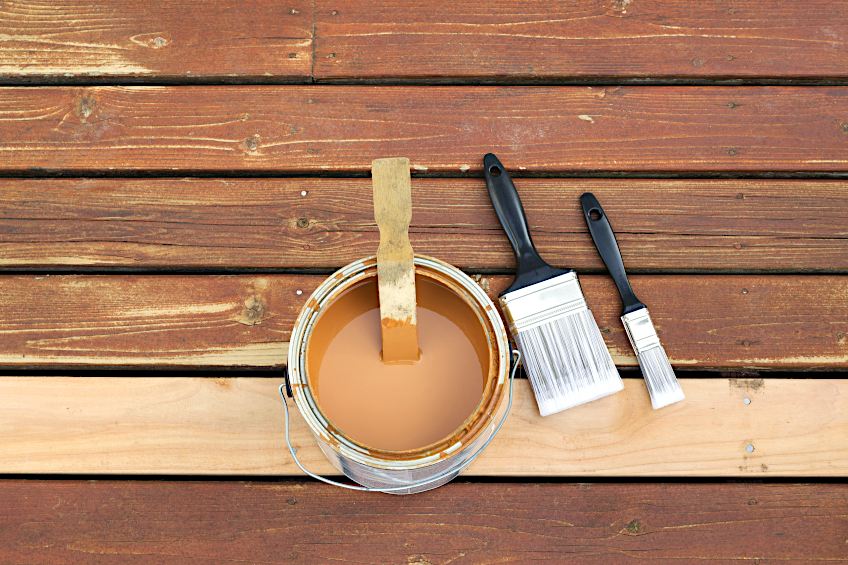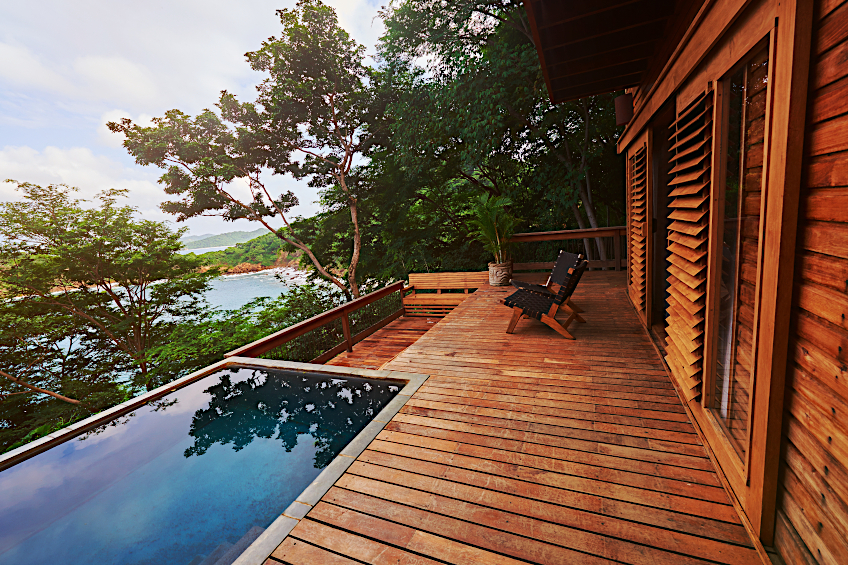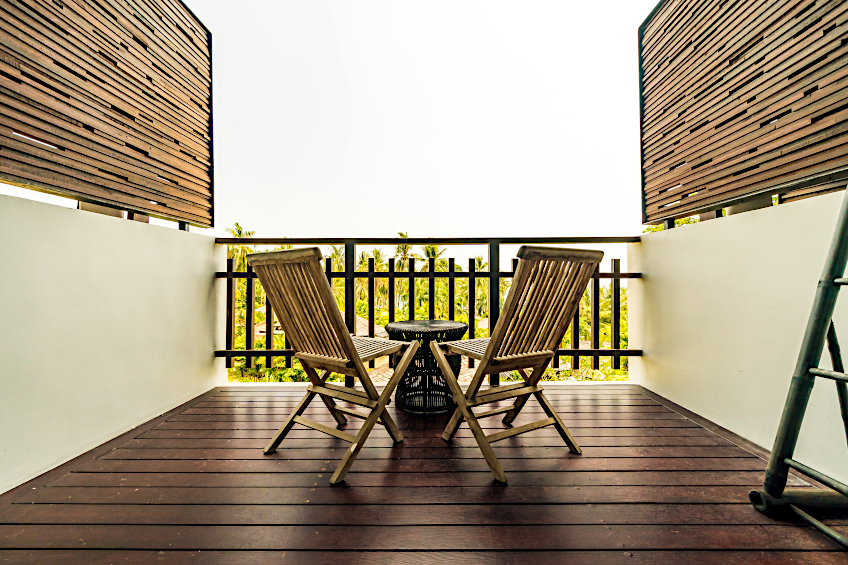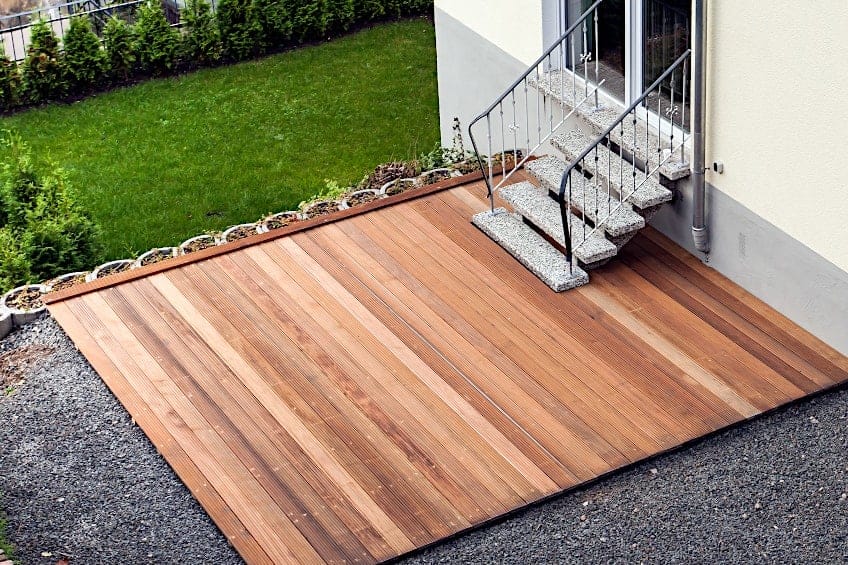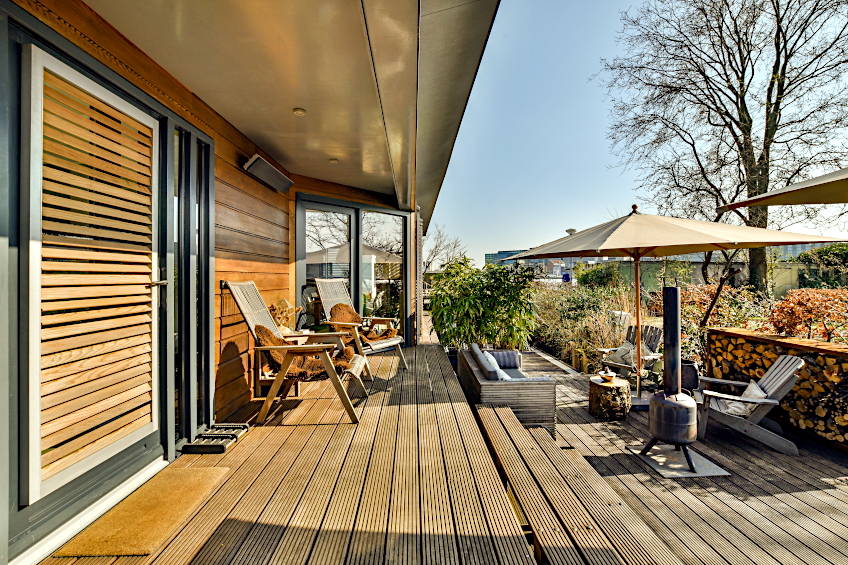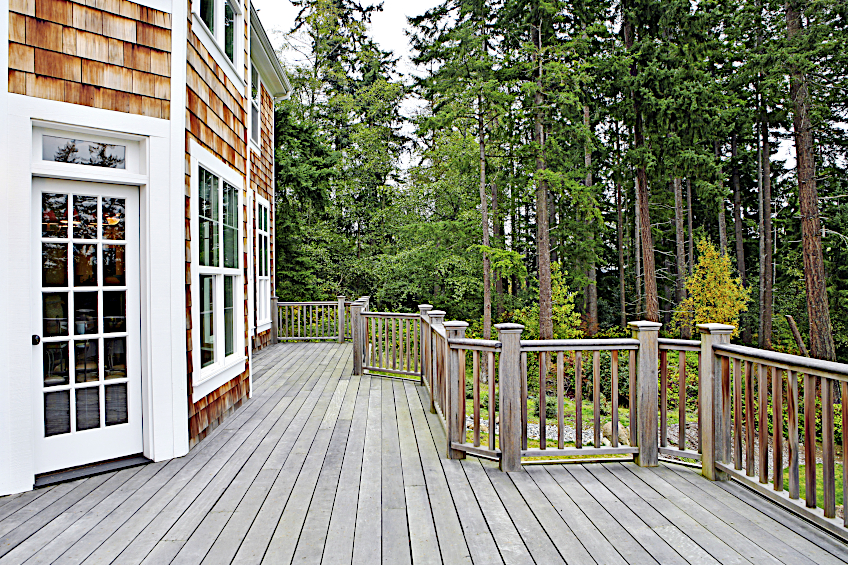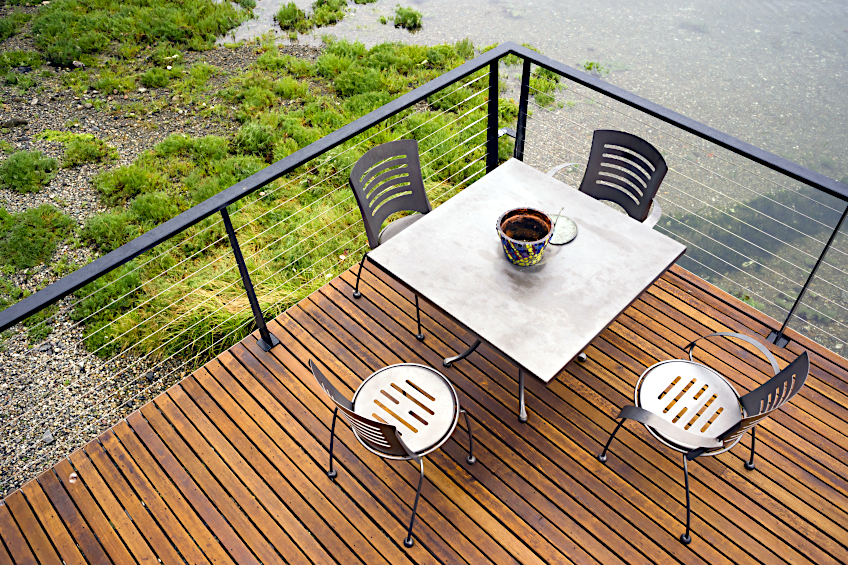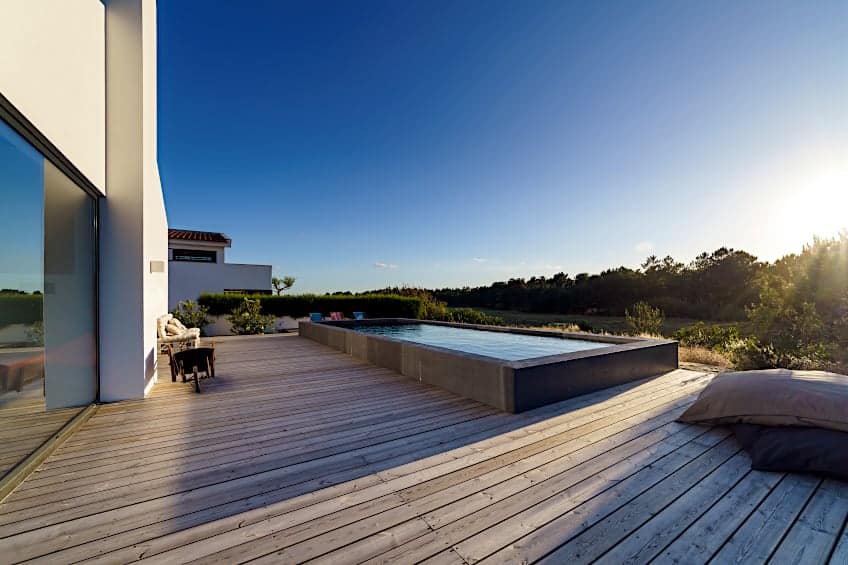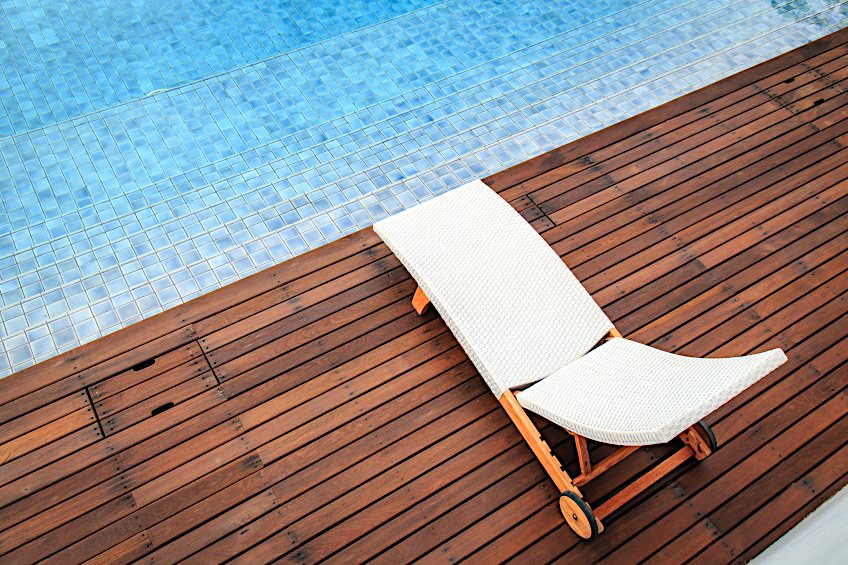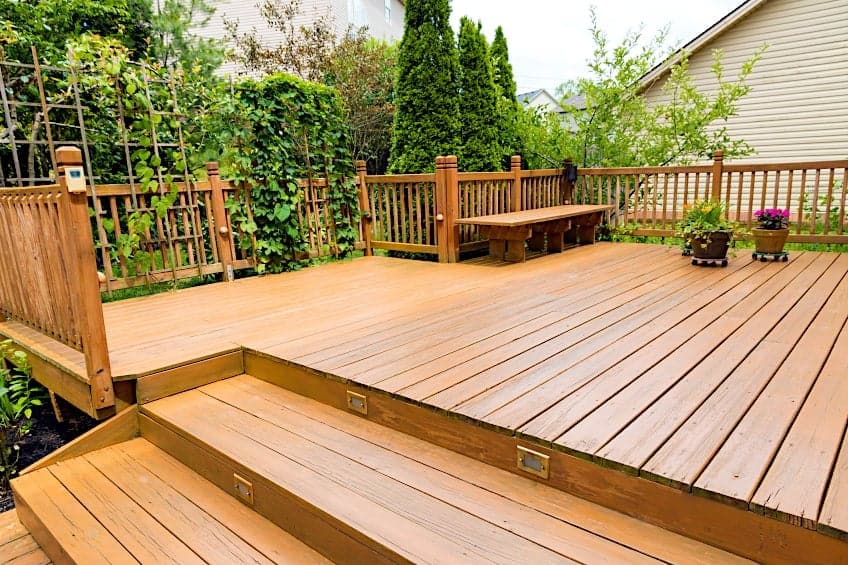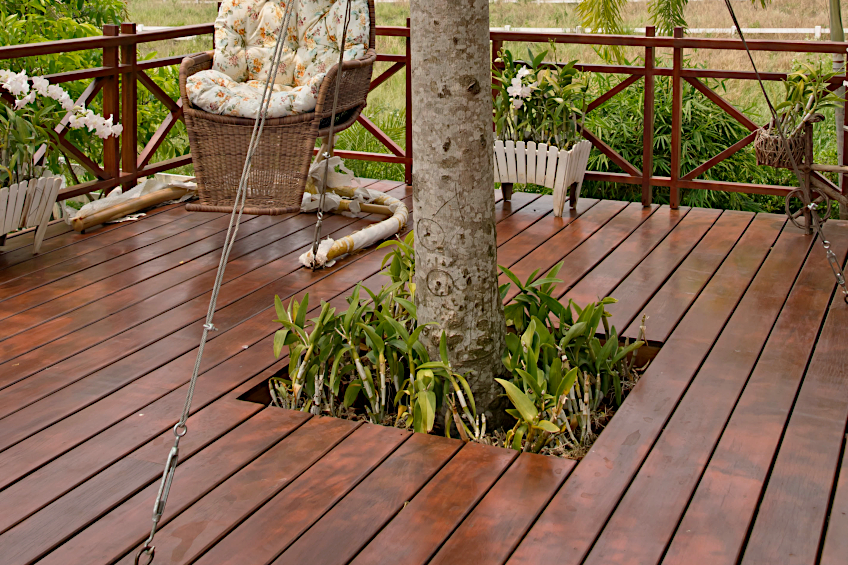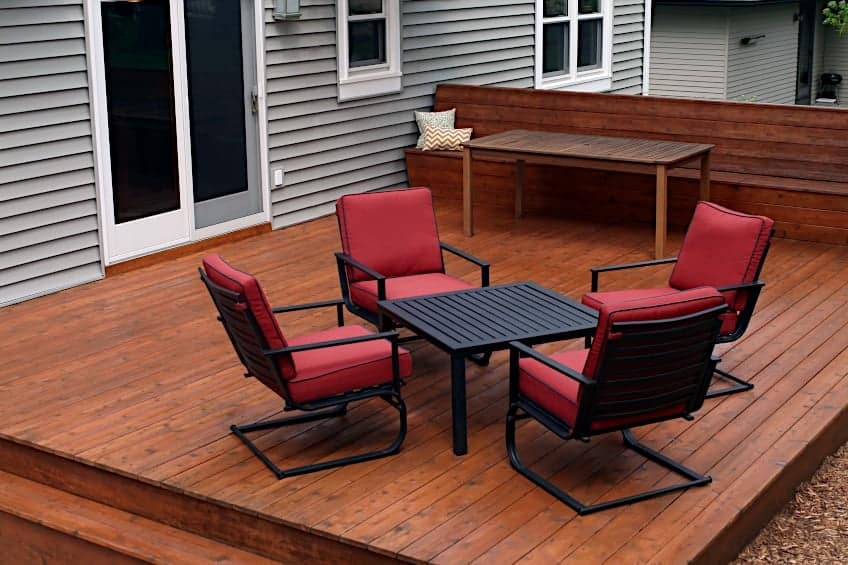Deck Stain Colors – Wood Stain Color Ideas for Decking
This post may contain affiliate links. We may earn a small commission from purchases made through them, at no additional cost to you. You help to support resin-expert.com
Having an exterior deck is fun! Whether you’re grilling with your friends, having a drink at golden hour, or just hanging out and enjoying the outdoors they are a great place to spend some much-needed time outdoors. Decks have a habit of degrading over time though, and the less protection you have the worse they’ll look when they become all weathered and soggy from exposure to the elements. One of the best solutions to this is applying some stain to your deck, which not only creates internal and external protection for your deck but also ensures that it looks good year-round. Let’s have a look at what deck stain is, why it’s good for your deck, and some cool deck stain colors you can use.
Table of Contents
What Is Deck Stain?
Before we get into some cool deck stain colors, let’s have a look at what deck stain is. Most commonly used deck stains consist of similar chemicals to paint, which are pigment, binder, and sometimes solvents. While paints can be considered surface coatings, deck stain is more of a wood treatment, with the primary difference being that deck stain not only adheres to the surface of the wood board but penetrates deep beneath the surface to provide comprehensive protection.
Wood stain, as the name suggests, stains the wood instead of a layer of colored material that sit on the surface of the board. This method of adding color and/or altering the tone of wood lasts longer and does not hide the grain of the wood, which might be something you’re looking for in an aesthetic upgrade for your deck.
This doesn’t mean that painting your deck is a bad idea, but if you’re looking for means of changing the look of your wood that ensures long-lasting protection and does not affect the natural texture of your deck, then the wood stain is arguably the best option. If your deck is covered overhead and the elements aren’t really an obstacle, there are natural alternatives to wood stain like tung and linseed oil for you to choose from too.
These options aren’t nearly as durable as a wood stain but they do contain fewer VOCs (volatile organic compounds) compared to wood stain, which might be a deal breaker for you if you have any respiratory illnesses. Wood stain does provide increased protection against things like moisture, heat, impact, abrasion, rot, and even insect infestation though.
Depending on who you ask, this might be well worth the presence of VOCs in its composition, but this usually depends on the application and where your deck is situated
Why Should You Stain Your Deck?
Staining your deck is usually a good idea, especially if it’s located outdoors devoid of any cover. Staining your deck ensures that your wood is protected both inside and out from the effects of moisture and prolonged exposure to sunlight. This level of protection typically lasts for a long time, and there are even stains that have been specially formulated for exterior decks.
It’s not just wear and tear that makes wood stain a good choice, either. There are also loads of wood deck stain colors to choose from that are sure to lighten, darken, or change the texture of your wooden deck. Deck stain can be a lot better than paint because it ensures that the grain of your wood isn’t hidden, which means you can retain your wood’s natural texture all while protecting and beautifying it.
Besides being good for the longevity and look of your wood, staining your wooden deck is also a lot easier than painting it. Both the preparation and the application of stain can be done with a rag or a roller, and if you’re lucky you don’t even have to apply a second coat! Applying stain can also be a lot faster than applying paint as it doesn’t take as long to set in and dry.
Typically, most people opt to stain their decks instead of painting them. Why, you ask? Besides being easier to apply, the reason that most people opt for a wooden deck stain is that they like the look of the wood they have selected. Painting a deck hides the wood that you have carefully selected, and it tends to make it slippery when wet- two things that aren’t what you want if you’ve taken the time and effort to construct your deck.
How to Choose Wood Deck Stain Colors
Just like with painting a surface in your home, it can be tough to settle on a color. Color choice is a fairly subjective thing, whether you want your colors to match the surrounding environment or want to do some color blocking is up to you, but at the end of the day, you want your color choice to look good. How do you choose a color that suits the aesthetic then?
Well, you could start by looking at your surroundings. What is the space used for? If you have kids around playing on your deck then you’d want the color to be bright so it’s not too drab, and it makes it easier for them to find their toys when they’re done playing. If it’s an intimate space for you and your loved ones when curled up by the fire, you’d like the color to be warm and cozy.
You could also model your deck stain colors after the architecture of your home. If you have a modern home the chances are that you’d want your deck to look as sophisticated as the rest of it. If you have an older or historically built property you might want to maintain and improve that look, in which case you’d go with a color palette that fits the look of the time it was constructed.
One final thing you should consider is your furnishings. You could go one of two ways on this: you could choose deck stain colors that match the look of your furnishings (or vice versa) or you could choose deck stain colors to contrast the theme of your furnishings to draw attention to them. Essentially, you have a choice between a juxtaposed or harmonious color pallet.
Know Your Wood Type
This might seem excessive but knowing what type of wood you’re working with can help a lot when choosing a stain for it. Why? Well, some woods are denser than others, this means that the wood fibers are packed closer together, which means that the wood’s ability to absorb stain is poor.
Some hardwood (and even softwood) species can have trouble absorbing the stain, so your approach and/or type of stain might need to change.
If a wood is quite dense, this could cause the wood to reject stains entirely, or it could cause the stain to blotch on certain sections of the wood’s surface. This being said, the best way to ensure that your stain will be effective on a wood species is to do your research beforehand. If you’re restoring an old deck that you inherited it can be challenging to identify the wood species, and in this scenario, it’s best to test your stain on an inconspicuous section of the deck that can be sanded clean later on.
You might not even have the option of using conventional wood stains on certain types of wood. If not, there are alternatives to wood stains like tung and linseed oil which don’t seep as deep into wood fibers but still provide a decent layer of protection for your deck’s surface. Even though they require a lot more care, these wood oils provide an impressive aesthetic and can be used indoors too as they contain little to no VOCs.
Another reason that you should know what type of wood board you’re working with is that some species react poorly when treated with wood stain. Rosewood and teak wood tend to have a high concentration of oil in them naturally, so they tend to reject any additional treatments added to them. This may be disappointing if you had your heart set on staining your teak deck, but you can rest easy knowing that your deck is durable and can still be painted if you really want to change up the look of your deck.
The Best Stain Colors for Deck Surfaces
Now that you know how to choose a color for your deck and how to assess whether your wood will accept the stain you’ve chosen, it’s time to look at some of the best stain colors for deck surfaces money can buy. Keep in mind that you should always choose a stain color that suits the natural tone of your wood, or you risk botching the look and feel of your entire space.
Cedar Stain
Cedar stain is one of the best possible choices for staining your wooden deck. Why? Cedar has the ability to make even the darkest of wood tones light and even slightly reflective. This means that it’s the ideal wood stain color to use in small spaces, especially if you want to make your space feel bigger without having to extend your deck.
This stain is also highly durable, so if you enjoy hot summer nights outdoors with a glass of wine and some good company, this wood stain color is sure to bring the space together. What’s more, is that it creates a passive contrast with darker wood tones, so your overhead beams and trim will get the attention they deserve too!
Tobacco Stain (Rustic)
Tobacco stain might sound like an old-fashioned approach to your wood stain style, but it’s quite the opposite, actually. Rustic tobacco stain creates a modern chic that is sure to pair well with any existing aesthetic thanks to its minimalist impact, and as a bonus, things like stain and dust don’t really show up on the surface, so you won’t have to clean it as often.
The nice thing about having a minimalist look to your surface is that you have the opportunity to accessorize your surroundings to draw attention to aspects of the space that you like. Think of it as a great starting point that you can build your aesthetic around; for example, you could use color-rich wooden furniture and a sleek fireplace to balance out the look.
Clear Epoxy
You might like the idea of wood stain because it allows you to showcase the beautiful textures of your wood while improving the visual impact of its color. If this is the case, wood stain isn’t your only option, and a clear epoxy won’t only protect your exterior wooden deck from the elements but ensure that its natural color and texture are visible.
The cool thing about using epoxy instead of wood stain is that the preparation and application process is relatively quick. You also don’t have to worry about whether your stain will match the color scheme of the rest of your environment once its cured, or whether you will have to apply additional coats to get the color you want.
Desert Brown
Whether you have a luscious green lawn or live out in the serene quiet of the desert, this color is sure to capture your attention thanks to its simplicity and visual impact. Desert brown resembles driftwood in its appearance but with a far more polished finished aesthetic that’s sure to have both you and your guests gawking in awe.
If you like the look of freshly sanded wood but don’t want to deal with the strong possibility of splinters (and why would you?) then desert brown is just what you’re looking for. It’s also very light which means dark furnishings and trim will create the perfect dichotomy and produce an aesthetic that feels well balanced and finely polished.
Light Gray
Since the turn of the millennium, gray has exploded in popularity, especially in circles where understated aesthetics are appreciated. Gray tones not only make for great wood deck stain colors, but they make for a decent paint color too! Gray allows the space to breathe, is low maintenance, relatively cheap, and can be used for basically any deck size!
If you’re into modern styles of furniture with some soft downlighting you can create a space that feels inviting and yet somehow still ready for a great evening outdoors with your friends and family. The nice thing about choosing a light gray tone for your deck is that you can match it with pretty much any type of furniture, not just the modern, angular kind.
Honey Teak
As far as wood deck stain colors go, honey teak is one of the brightest and most used. This wood stain color is perfect if your home is the go-to place for barbeques, parties, and general get-togethers because it makes everything around it seem bright and warm. This works whether you have a paved backyard or a lush green lawn for kids to play on too.
The cool thing about honey teak is that it has a way of integrating any other color or furniture style into itself seamlessly, which means you won’t have to run around finding things that match the look and feel of your deck. Whether you have colorful pottery, plants lining the walls of your home, or a few tastefully placed rugs for the kids to play on, honey teak will definitely work for you.
Driftwood Gray
This gray and desert brown have a lot in common. They are both capable of creating a rustic aesthetic, just on opposite ends of the aesthetic spectrum. While desert brown tends to resemble dried-out wood, you’d find in the middle of a barren wasteland, driftwood gray creates a calming feel with a look that captures the look of washed-up driftwood laying on the beach on an early summer morning.
One of the characteristics we love about this color is that it doesn’t create a lot of visual impact itself, which allows you to build the overall look of your deck (furniture, fireplace, lighting) without having to account for the color of your deck too much. In this scenario, your deck is more of a silent element in the composition of your deck instead of being the centerpiece that everything else has been built around.
Walnut
Walnut is pretty much one of the prettiest woods around. Don’t believe us? Just ask the fine people at Rolls Royce what wood they use for the interior trim of their cars and get back to us (It’s walnut!). If you want your exterior deck to have a warm, welcoming, premium finish, then you should consider a walnut wood stain for it.
As far as wooden deck stain colors go, walnut is one of the most beautiful choices you can make. Walnut stain, like the wood, can be pretty expensive, especially if it’s a high-quality stain. This being said, be sure that the type of wood you’re trying to stain is capable of accepting it, or you could end up making an objectively expensive mistake.
Brown Butternut
While butternut might be one of the most common wooden deck stain colors, it’s also one of the best looking. Butternut has one of the richest color pallets of all the wood stain colors, and as a result, it can breathe life into any space with minimal effort. It also works with pretty much any wood species, provided its pores are willing to accept it.
Butternut doesn’t just have to be used on wooden decks either- it’s one of the best stains for porches too! This wood stain works just as well in large spaces as it does in small ones, which means that even if you have a porch that’s sealed off from the outside it can still provide a sense of wonder and warmth to the space.
Brown Chocolate
When one mentions chocolate, it’s very easy for one’s mind to delve into images of decadence and luxury. While chocolate brown is a lovely rich color, it doesn’t necessarily have the textural effect of a deck stain. This deck stain actually provides an understated air of class to a space that can be changed and added upon depending on your taste.
You have two main choices when it comes to using chocolate brown wood stain. The first is to use it to make a space feel less empty, but still well put together by implementing minimalist furnishings to capitalize on its refined aesthetic. The second is that you can go for a richer tone and pair it with eloquent, similar colored furnishings to create a really deep, imposing feel to your space.
Cedar Brown
Whether it’s deck building or furniture construction, cedar is one of the most sought-after wood species for large-scale construction. Why? Well, besides its incredible rigidity to flexibility ratio, it has one of the best colors out of any wood species. This wood stain color work particularly well for homes with conventional color schemes, so it’s a good option if you’re just looking to stain your deck without changing your furnishings and painting your home to match it.
It can get a bit bland if it’s used in an exceptionally large space though, so it’s best to section off your deck visually if it’s large with things like potted plants, furniture, and even a nice outdoor fireplace. All in all, cedar brown is one of the most versatile wood stain colors because not only does it work for decks, but it’s one of the best stains for porches, windowsills, trim pieces, and even doors!
Now that you know why it’s a good idea to stain your deck, what you should know about staining your deck before you get started, how to choose a color for your deck, and which colors are best suited for your deck, its time for you to get out there and put your new-found knowledge to the test. Remember to test your stain before you apply it, and to be sure that your wood is capable of accepting wood stain.
Frequently Asked Questions
Is Wood Stain Considered Paint?
Is wood stain considered paint? Objectively, no. Wood stain is more of a wood treatment than a surface coating, which is what paint is. While surface coatings only cover the surface of an object, like a wood board, wood stain penetrates deep into the wood fibers and bonds with it.
What Does Stain Do to Wood?
What does wood stain do to wood? As the name suggests, wood stain stains the internal and external wood fibers of a wood board. The wood fibers are essentially saturated with the color pigment, which translates visually to a darker or lighter tone for the wood board.
Is Wood Staining Permanent?
Is wood stain permanent? Wood stain is far more challenging to remove than paint or other types of wood treatment. This is because the pigment binds with wood fibers on a molecular level, which means you will have to sand the wood board which has been stained to remove the stained wood fibers.


